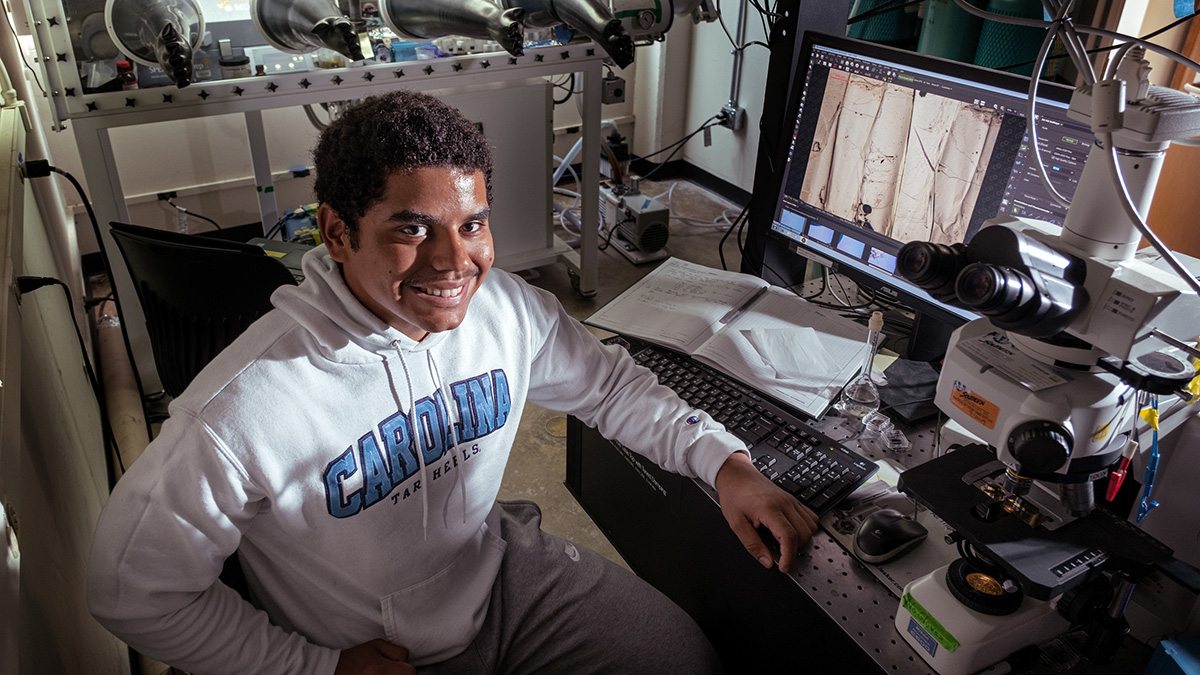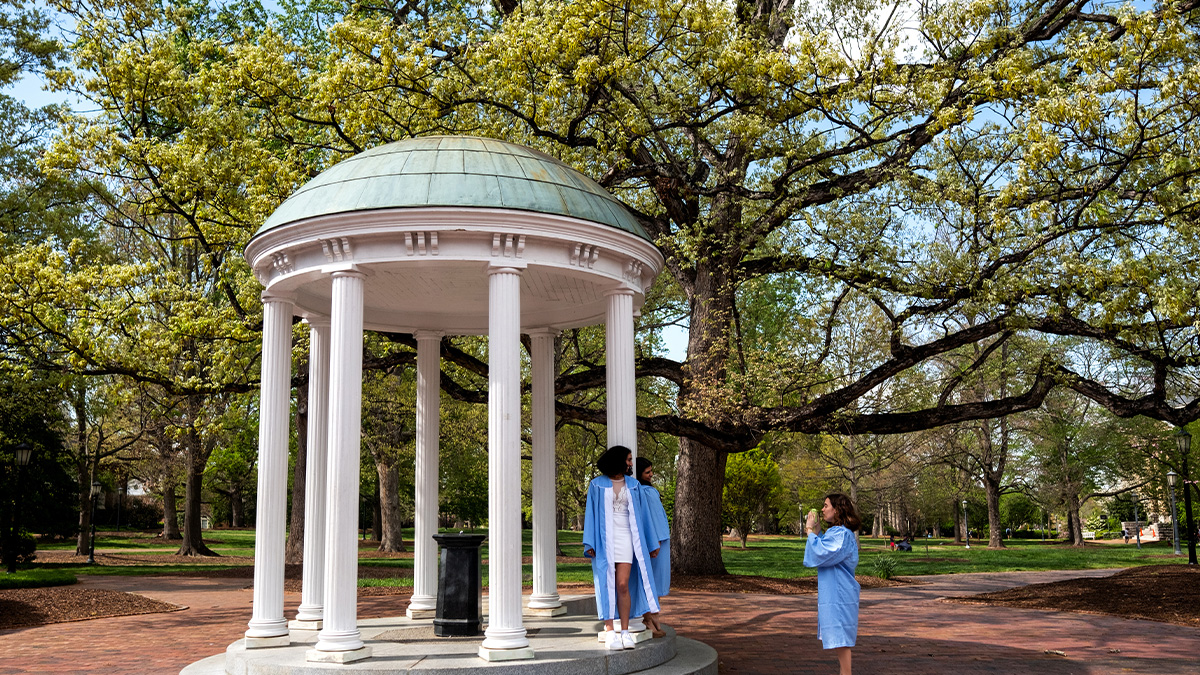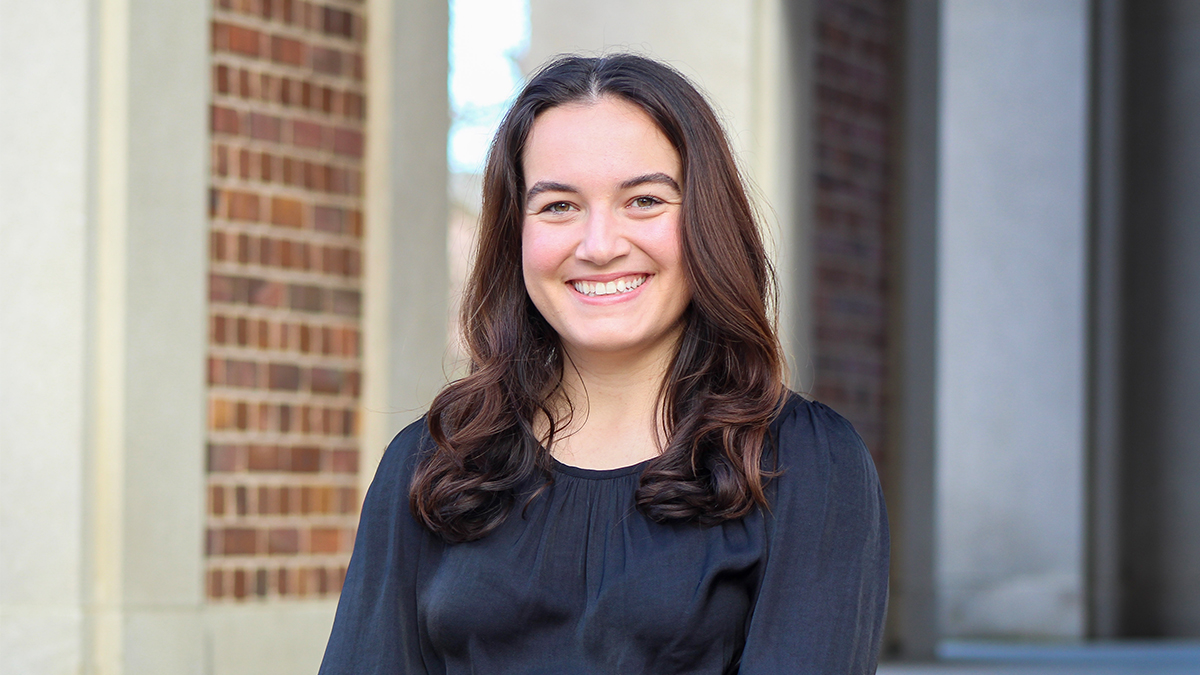Building a better battery
Scientists don’t understand a lot about the process that charges batteries. Miguel Reyna’s research may improve that understanding and improve batteries, as well.

Scientists know what makes lithium-ion batteries release energy to power our phones, devices, cars — our lives. Charged lithium atoms, called ions, move through a liquid electrolyte into layers of graphite allowing electrons to flow and power devices. That process is called intercalation.
But scientists don’t understand a lot about the process, said Scott Warren, associate professor in the College of Arts and Sciences’ chemistry department. “How does lithium go in and out of graphite. How does it charge. How does it discharge?”
Answers to those questions are what Miguel Reyna, a junior chemistry major from Fayetteville, North Carolina, seeks in Warren’s laboratory. A Summer Undergraduate Research Fellowship award of $5,000 supports Reyna’s research.
Reyna’s looking at intercalation, which produces multiple colors. “Red, orange, yellow, blue, purple – a color for each distinct stage of that transformation,” Warren said. “Those stages haven’t been fully characterized. What’s happening at each of those stages?”
By consistently reproducing the stages and analyzing them, Reyna hopes to add to researchers’ understanding of batteries and help improve them. One goal is to store more lithium in batteries to increase energy for a longer battery charge.
“It’s like trying to make maximum use of a file cabinet drawer. Lithium is the paper. We have a drawer filled with folders and we’re wondering how many pieces of paper we can fit in and it still work,” said Reyna.
Stuffing too much lithium into the same space to crank up voltage or power, Warren said, might make the battery swell, leak, crack or undergo unwanted chemical reactions.
Reyna begins his experiments by building a device based on the anatomy of household batteries with two electrodes — one positive, one negative. They store and release lithium ions while charging and discharging, like a sponge soaks up water and then releases it when squeezed. An electrolyte, usually a liquid containing dissolved lithium salt, conducts or allows lithium ions to flow between electrodes to store and produce electrical energy.
A glass laboratory slide is the device’s foundation. Reyna uses a sputterer machine to coat the slide with a shiny layer of titanium thin as a soap-bubble. He glues a Teflon frame (think miniature rectangular window frame) on the slide with epoxy. With long tweezers, he sets a layer of graphite thin as a human hair inside the frame, then applies a voltage meter to ensure it conducts electricity.
After the epoxy sets in three days, it’s over to a workspace called a glove box that’s devoid of oxygen. Reyna places the device in the box through an air lock, then reaches inside with long rubber gloves that are attached to holes in the box to hold the slide. He adds lithium in liquid form and seals the device.
Then he puts the device under an optical microscope to check the device’s quality. If it’s structurally sound, he begins videotaping the intercalation for four hours. This is where he hopes to see migration stages in colors.
His goals are to consistently reproduce the device and the experiment and see a progression pattern displayed over many experiments. “I hope to fine-tune this device so that we can see the colors perfectly.” Once he consistently sees the pattern, the team can use other imaging methods to learn more about the intercalation.
“If we can understand the fundamentals, we could figure out how to make it more efficient, maybe bring some innovation to batteries,” Reyna said.




